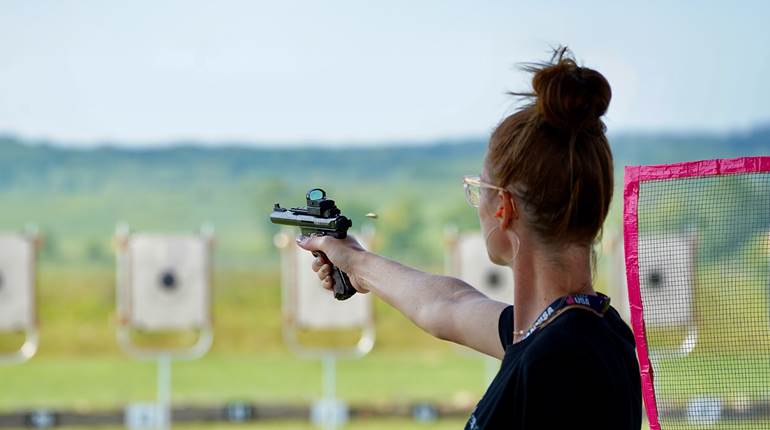
When Beretta’s U22 Neos officially launched in 2002, its racy looks were different, unexpected and a breath of fresh air in a market dominated by clones and lookalikes. The single-action, blowback-operated, semi-auto pistol was chambered in .22 LR, a cartridge first introduced in 1887. Some traditionalists immediately labeled the pistol’s looks as futuristic and that, of course, led to scattered claims the gun was out of sync with the rimfire’s legacy. The fact that dozens of guns were already widely accepted as ideal for the diminutive ammo piled onto those claims.
There’s no doubt competition was stiff, but gun owners sang a different tune after they handled one in the store or witnessed the performance on the firing line. The styling was distinctive, and the sleek Italian looks oozed a high-speed style.
Yes, it wore a back-to-the-future 31st century look, but it carried all the features ideal for today’s shooters. Thanks to its ability to be field stripped into five major assemblies without tools, maintenance was a breeze. The pistol, which was designed and manufactured in the U.S, shipped from the factory with an ambidextrous safety.
By 2003, the response had warmed up significantly, and the company responded with “Deluxe” models it labeled as U22 Neos DLX. They were available with barrels of either 7.5" or 6", and the trigger was adjustable for overtravel. Front and rear sights were replaceable. In 2004, the gun’s modularity shone when Beretta introduced a carbine-conversion kit. In it, Beretta included a skeletonized rifle stock and a fore-end assembly with a longer barrel, and the gun retained its optic rail.
All models had Weaver-style rail atop the slide, which made optic mounting a breeze. Standard versions came with an adjustable sight at the rear and removable one up front. The was gun ready for the range right out of the box. Magazine capacity was 10 rounds, and the frame was constructed from fiberglass-reinforced polymer. Non-slip inserts in the grip ensured its user a solid hold, even with sweaty palms or when Mother Nature got nasty. Reviews of the fit and finish were glowing, and complaints about the gun’s feel remained unicorn-scarce.
Originally billed as an entry-level rimfire plinker, it earned a solid reputation as a viable practice alternative. The standard configurations were all-black or a black frame and stainless finish on the slide, but it appeared in several color patterns throughout the years. The exotic looks enticed more than a few experienced and knowledgeable gun owners into adding another rimfire to their safes.
MSRPs were in the $300 range, approaching $400 when Beretta, unfortunately, discontinued the versatile handgun. The last factory-fresh models produced had 4.5" barrels, measured 8.8" in length and weighed 31.7 ozs., (unloaded).
It’s a shame the millions of first-time gun owners that purchased in the last few years will never experience the U22 Neos as an original owner. They can, however, still find them on the used market. Odds of finding one with a low round count are quite low, though. The U22 Neos was much fun to shoot and whether offered for practice or plinking, we’re hoping Beretta brings it back soon.





































